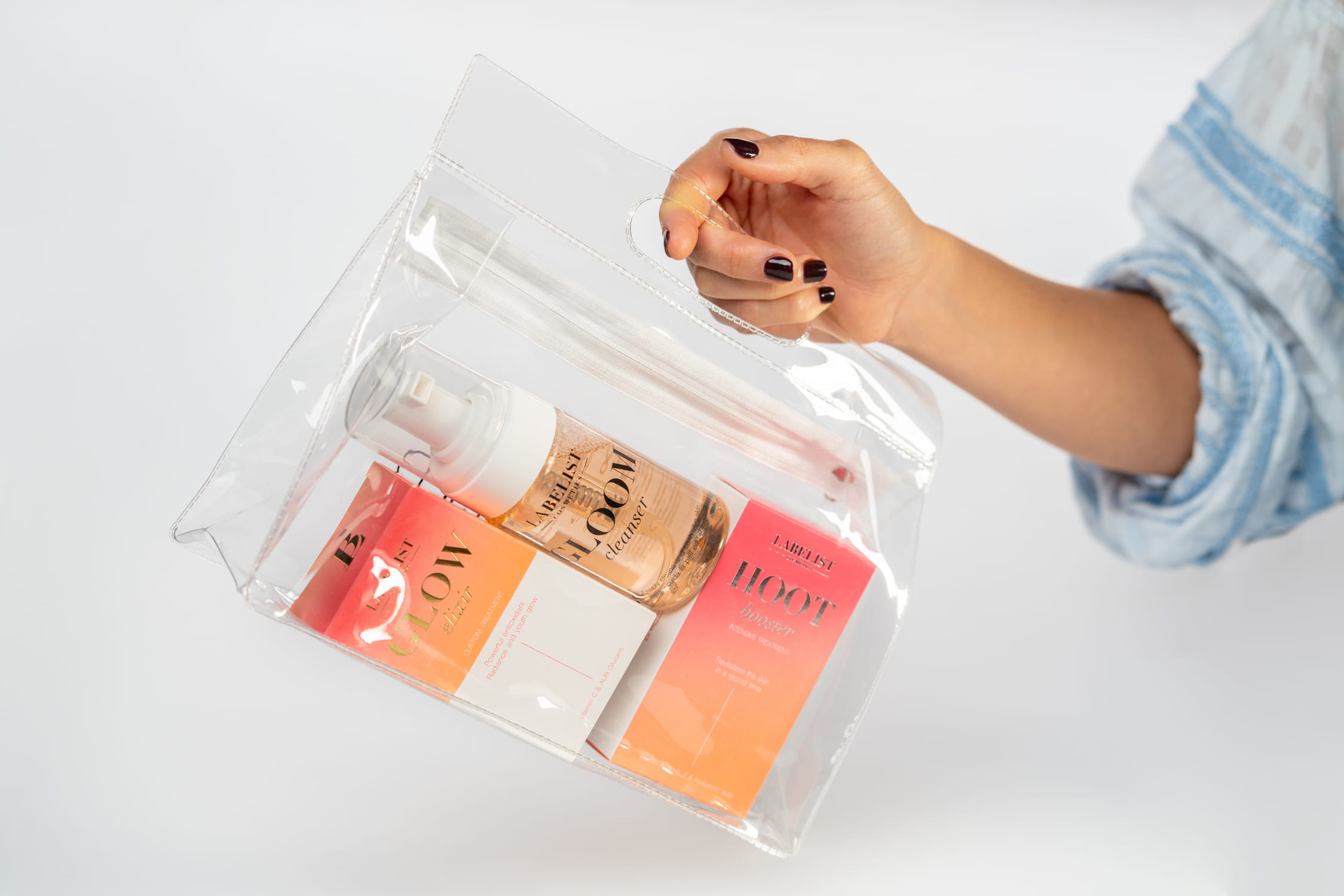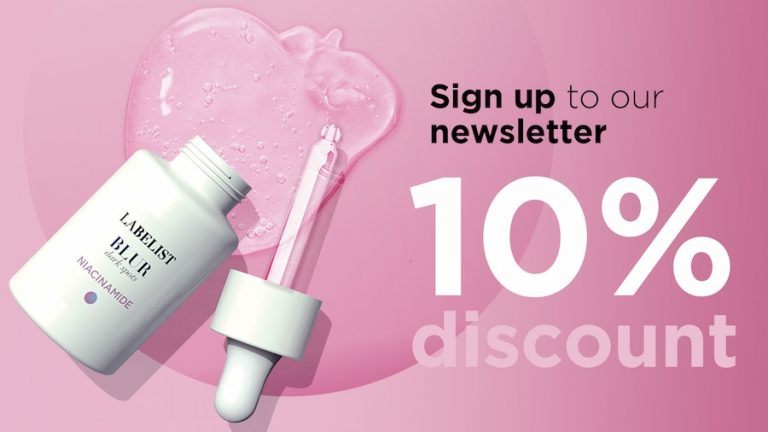It’s time for post holiday skin care! All you need is hydroxy acids
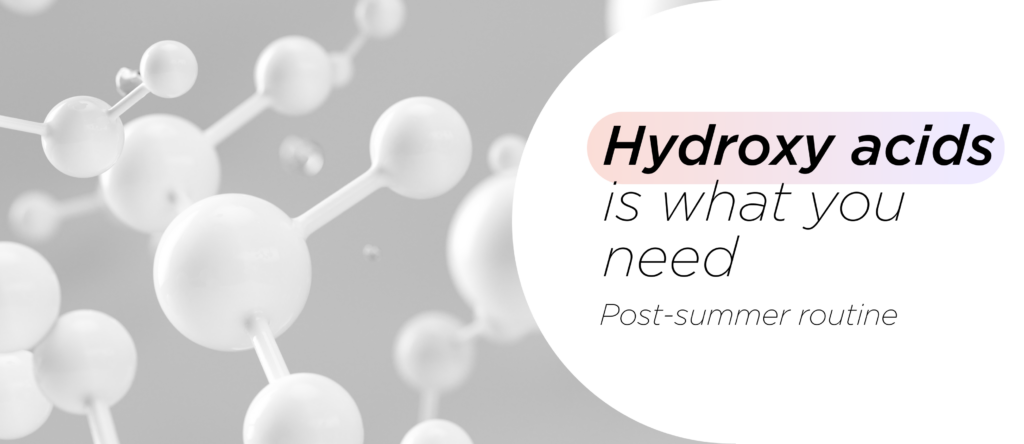
Hydroxy acids are molecules that have the ability to exfoliate and renew the skin by removing dead cells from the surface layers. Their effect depends, among other factors, on their molecular size, pH of the formula, percentage and affinity for water or oil.
The best known are Alpha- and Beta-hydroxy acids and their main difference lies in their chemical structure, which determines that the former are hydrophilic, i.e. they have an affinity for water, and the latter are lipophilic, i.e., they have a greater affinity for oils or lipids.
Below, we share a table comparing their function, use and application:
| ALPHA HIDROXY ACIDS | BETA HIDROXY ACIDS | |
| AFFINITY FOR | Water | Oil or Skin Lipids |
| FUNCTION | · Exfoliant ability.· Improves skin texture
· Promotes collagen and elastin |
· Keratolytic or exfoliant· Sebum regulator
· Anti- inflammatory. Reduces bloating and redness. |
| USE | · Erase fine lines· Plump skin
· Tighten skin · Target dark marks and blemishes · Boost radiance · Increase product absorption |
· Treat acne-prone skin.· Unclog pores.
· Remove impurities · Remove comedones · Increase product absorption |
| All skin types except for sensitive, red or damaged. | Oily skin, acne-prone and visible pores | |
| APPLY | At night because they are photosensitive. | Day and/or night. No photosensitive. |
| EXAMPLES | · Glycolic acid· Lactic acid
· Mandelic acid · Malic acid · Tartaric acid · Citric acid |
Salicylic acid |
| INTERESTING FACTS | Glycolic acid is the smallest acid in particle size. Therefore, it penetrates easily and performs on the deepest skin layers. |
There are also polyhydroxy acids, but they are less well known. Their function is to moisturize and improve the barrier function. Gluconolactone and lactobionic acid are the most common ones.
Hydroxy acids are plant-derived acids. For example, glycolic acid derives from sugar cane, malic acid from apples and mandelic acid from almonds. Nevertheless, they can also be synthesized through chemical or enzymatic methods.
They are great ingredients to improve your complexion, but you should approach with caution. Overuse or misuse can lead to irritation or redness. A general tip would be to introduce them into your beauty routine gradually. Start by applying them three times a week and if your skin tolerates them, increase frequency. If you notice an uncomfortable sensation, decrease the number of applications.
Below, we are sharing some frequently asked questions. We hope they can be of great help:
Can hydroxy acids be used together with Vitamin C?
We don’t recommend using them together because they will alter the ph (acidic level) of the mixture and so its power and effectiveness will diminish. But consider using them in the same routine. Use Vitamin C in the morning and AHAs in the evening
Labelist case:
- Glycolic + AHA (Alpha hydroxy acids combination) has got a pH of 4.
- Vit C + GAG (Stabilised Vitamin C) Has got a pH of 5.
In this case the effectiveness of Alpha hydroxy acids would decrease.
Can hydroxy acids be used together with retinol?
It’s not recommended using them together, but you can use them in the same routine. Both are exfoliant so, if applied together, the skin could be severely damaged. Thus, achieving a counterproductive result. So, if you feel a total complexion overhaul is necessary, we advise you to alternate their use. Don’t forget they are both used in the evening.
Labelist case:
Even though the retinol contained in our retinol 0,15% serum is encapsulated and highly tolerated, we don’t advise to mix it.
Interesting, right? ,)
More to discover
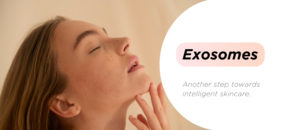
Exosomes in cosmetics: a further step towards intelligent skin care
Biomedicine has shown that exosomes can regenerate tissues, modulate inflammation and even reverse cellular aging. Today, that knowledge lands in cosmetics to transform daily skin
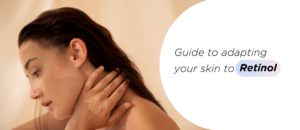
How to Start Using Retinol Without Irritation: Complete Guide
Why Is Retinol so Popular? Retinol is one of the most effective skincare actives, known for its ability to reduce wrinkles, improve texture, and treat
Do you want to be an international distributor of Labelist Cosmetics®?
